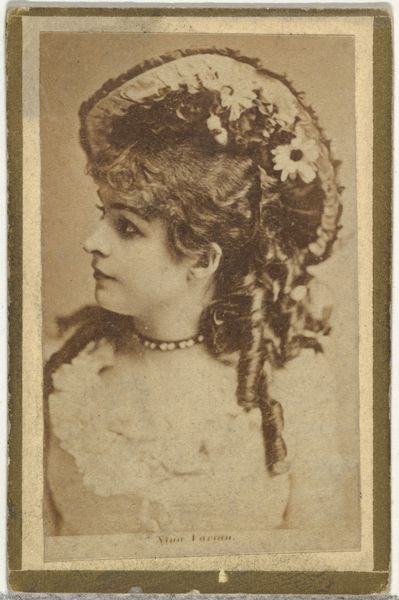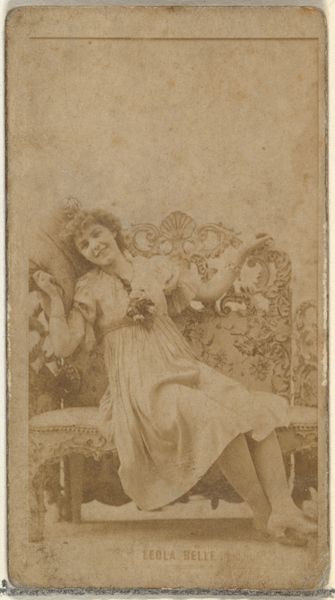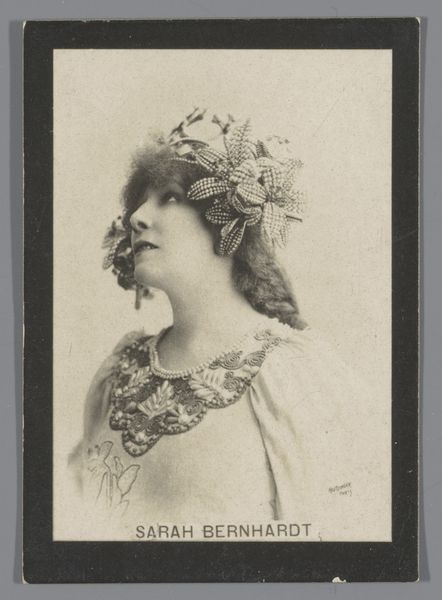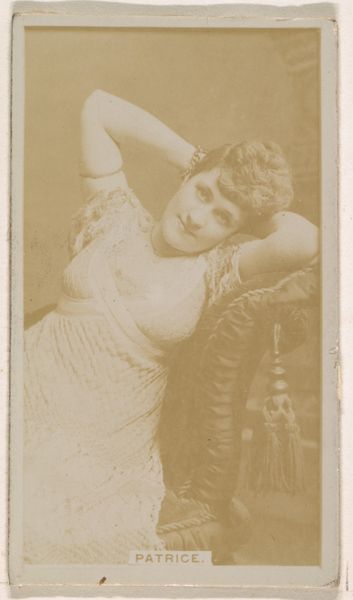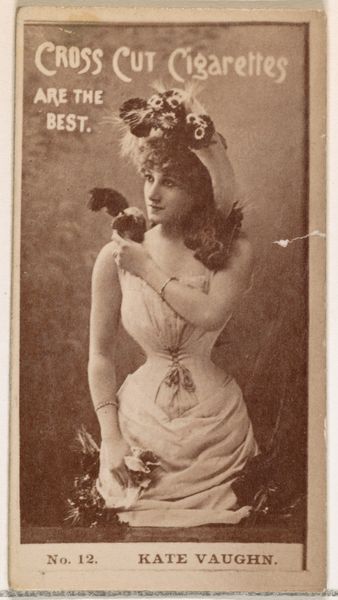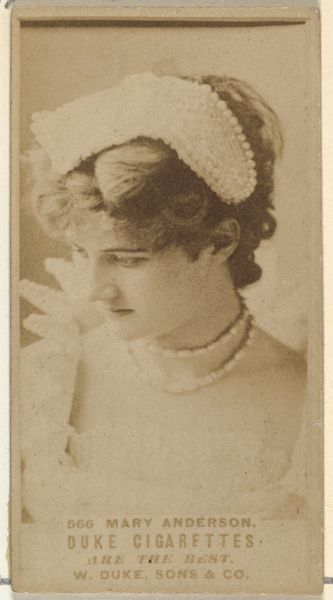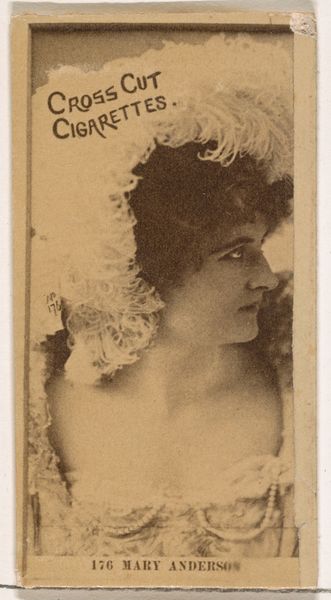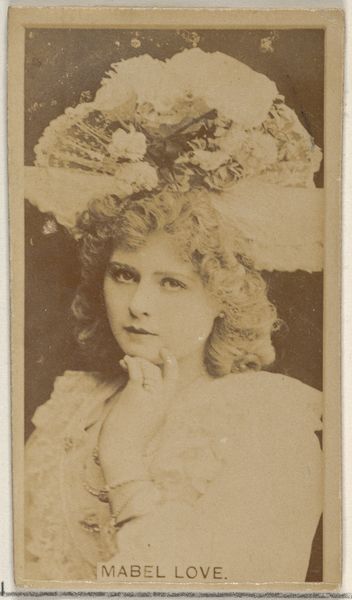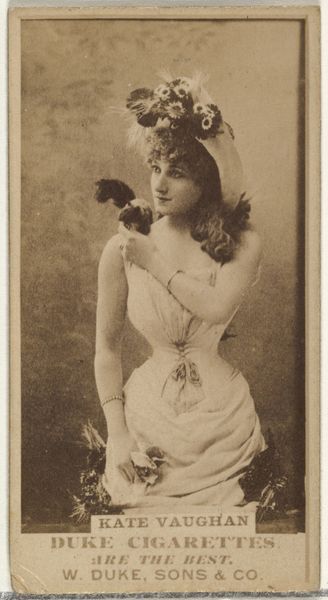
Primrose: Flirtation, from the series Floral Beauties and Language of Flowers (N75) for Duke brand cigarettes 1892
0:00
0:00
Dimensions: Sheet: 2 3/4 × 1 1/2 in. (7 × 3.8 cm)
Copyright: Public Domain
Editor: So, this little card, “Primrose: Flirtation” from 1892, was part of a series by the American Tobacco Company. It’s a watercolor and print combo…I'm struck by the contrast between the delicate floral imagery and the industrial context of cigarette production. How should we interpret this, given it was essentially advertising? Curator: Precisely! The very means of production here is what interests me. These cards, mass-produced as inserts for cigarette packs, reveal a deliberate blurring of high art and commercialism. How do we reconcile the perceived "preciousness" of watercolor with the disposability of tobacco packaging? Editor: I suppose it speaks to a desire to elevate the brand. To associate smoking with something beautiful and sophisticated. Curator: Indeed. Consider the social context: the late 19th century saw an explosion of consumer culture and the rise of mass media. This card isn't just about selling cigarettes; it's about selling a lifestyle, a certain aspirational identity. The choice of primroses, a flower associated with "flirtation" in the Victorian language of flowers, further emphasizes this seductive appeal. Who was the intended consumer? Editor: Probably women and men... appealing to different desires, maybe? A man buying them, a woman wanting to BE that portrait. Curator: Exactly. And let's not overlook the labor involved. While the original artwork might have been created by a skilled artist, its reproduction depended on factory workers, often women and children, churning out these cards en masse. Where is their labor acknowledged? Editor: It really puts a new spin on "art for the masses"—connecting it directly to industrial production. It's unsettling and fascinating to consider that kind of production. Curator: Right. Seeing this image, then, should compel us to question the systems of labor, consumption, and representation embedded within even the seemingly innocent world of floral illustration. Editor: Definitely food for thought! Thanks for pointing out that complexity, I was too focused on the pretty flowers.
Comments
No comments
Be the first to comment and join the conversation on the ultimate creative platform.
